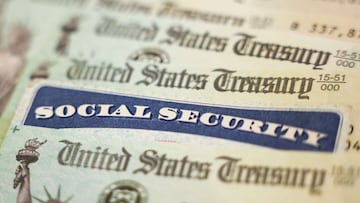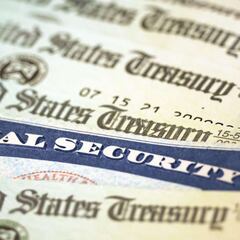How many numbers are in a Social Security Number?
For nearly a hundred years the Social Security Administration has issued cards to Americans and thanks to the numbering scheme it should have decades more.

All Social Security cards come with a series on numbers on the front and back. The ones on the back are for the card and the nine-digits on the front are for the holders’ account with the Social Security Administration.
Every Social Security Number is unique, and the agency has issued around 450 million cards since the programs was created in 1935. With a tweak to the numbering scheme a decade ago, the nine-digit combination will be able to continue to issue new numbers for at least another 50 years.
Also see:
- The missing Social Security Numbers
- How are Social Security credits calculated?
- Social Security benefits increase highest in 40 years
- What is the income limit for Medicaid?
Why are the numbers divided into three sets?
The Social Security program was established before the advent of modern-day computer technology. To aid record keepers in their job the three sets served a purpose for cataloguing workers records of contributions and benefit payments. The first three digits corresponded to a geographical region of the US until 2011. At first the state where the number was issued and later the Zip Code of the Social Security card applicant.
The second set of two digits were known as the “group” numbers and despite internet-based rumors, they merely organized the soon to be millions of files. The "group" numbers were not used consecutively. First, only the odd numbers 01 through 09 were used followed by the even pairs of 10 through 98. Once all the numbers in the 98 group were used then even pairs 02 to 08 were used followed by only odd numbers 11 through 99.
Need to replace your #SocialSecurity card? It has never been this easy! Applying for a replacement card online is free and available in most states with a personal #mySocialSecurity account. Learn more: https://t.co/CWlQc1a6Bq pic.twitter.com/7PNyGWtduG
— Social Security (@SocialSecurity) October 17, 2021
Each group number is followed by a “serial” number which were used consecutively starting with “0001”. Once all the serial numbers were used up in a “group” a new “group” number would be used.
There are other number combinations that are not used such as issuing Social Security Numbers with “666” for the first three digits. None of the three sections will ever have all “zeros”. And no Social Security Number will begin with the number “9”.
Nearly half of potential Social Security Numbers still available
The nine-digit combination of numbers, taking into account the combinations not allowed, gives the agency around 900 million unique Social Security Numbers. Each region of the US was allocated a certain number of Social Security Numbers through the “area” number.
Millions already manage their #SocialSecurity benefits online so they can do what they want offline. With your personal #mySocialSecurity account, you have the freedom to conduct business with Social Security from any location and on any device. https://t.co/Ky8uU7BAF3 pic.twitter.com/JUaHx5VCrz
— Social Security (@SocialSecurity) October 20, 2021
Related stories
However, when the Social Security Administration originally designed its system for issuing numbers portions of the US were sparsely populated. Due to migration into those areas the agency ran into a number crunch having not allocated enough numbers for future beneficiaries. So in 2011 the Social Security Administration switched to using “randomization” for issuing new Social Security Numbers.
As well as freeing up numbers from regions with higher allocations a couple more numbers were freed up to use. Previously the number “8” was not allowed to be used as the first of the nine digits. Now that the Social Security Administration has issued around 450 and some million numbers so the agency has a little under half of its numbers still available. It’s expected that those numbers should cover the next 50 or more years of new applicants before another more fundamental modification to the numbering scheme is needed.


